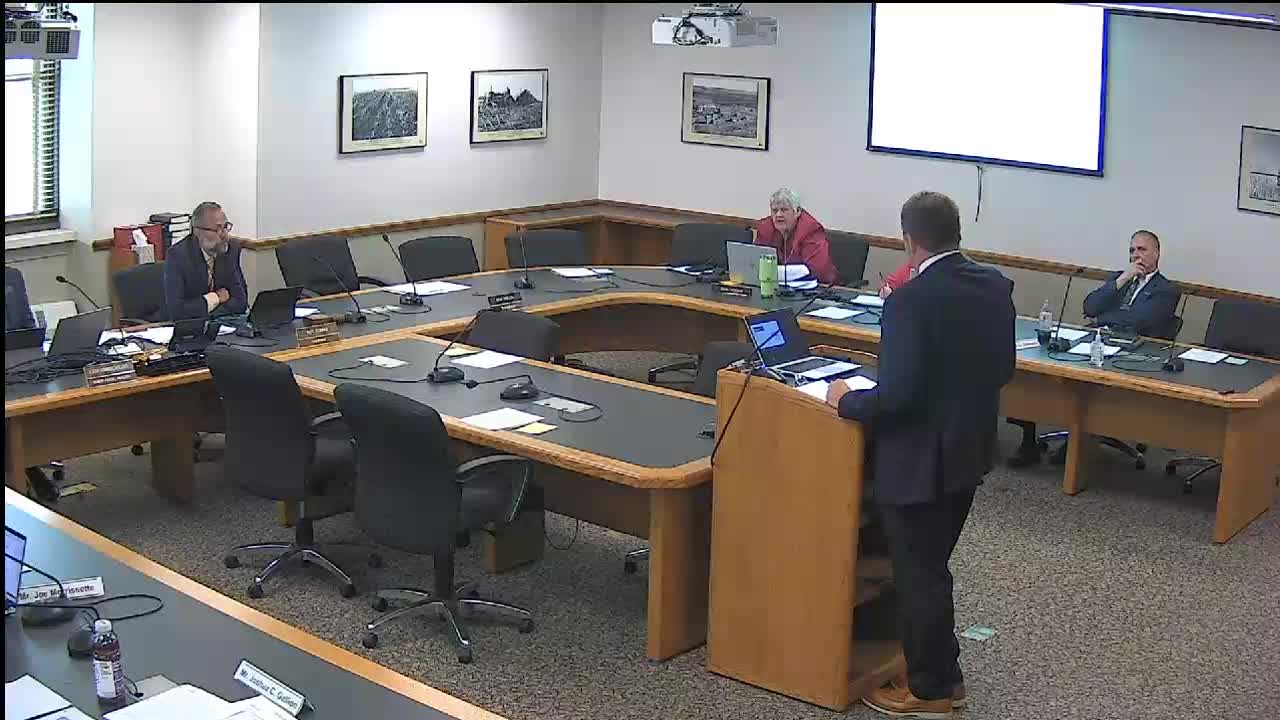Corey Mach outlines NDIT's role in supporting North Dakota government agencies
July 30, 2025 | Legislative, North Dakota
This article was created by AI summarizing key points discussed. AI makes mistakes, so for full details and context, please refer to the video of the full meeting. Please report any errors so we can fix them. Report an error »

In a recent meeting of the Legislative Task Force on Government Efficiency, held on July 30, 2025, key discussions centered around enhancing inter-agency collaboration and improving job quality in North Dakota. The meeting highlighted the importance of breaking down barriers that hinder efficient project initiation within the state, with a focus on creating a streamlined process for agencies to share information on their projects.
One of the primary goals articulated during the meeting was to make North Dakota an attractive option for businesses looking to set up operations. Task force members emphasized the need for a system that allows for quicker project approvals and reduced bureaucratic obstacles. This initiative aims to foster economic growth by encouraging businesses to establish themselves in the state, ultimately leading to the creation of living wage jobs.
The meeting also featured a presentation by Corey Mach, the Chief Information Officer for the State of North Dakota. Mach provided an overview of the North Dakota Information Technology (NDIT) agency, which plays a crucial role in supporting various state agencies with their IT needs. He explained that NDIT has evolved significantly since its formation in 1999, expanding its services to include cybersecurity and application management. Mach noted the challenges faced by NDIT in meeting the diverse needs of different agencies while avoiding redundancy in services.
The discussions underscored the complexity of the state's IT landscape, where agencies often require customized solutions that can lead to a proliferation of applications needing support. Mach highlighted the importance of maintaining a balance between meeting unique agency requirements and managing resources effectively.
As the task force continues its work, the focus remains on improving government efficiency and ensuring that North Dakota remains competitive in attracting new businesses. The next steps will likely involve further exploration of inter-agency collaboration strategies and the development of standards for job quality and compensation across state projects. The outcomes of these discussions could have significant implications for the state's economic landscape and workforce development in the coming years.
One of the primary goals articulated during the meeting was to make North Dakota an attractive option for businesses looking to set up operations. Task force members emphasized the need for a system that allows for quicker project approvals and reduced bureaucratic obstacles. This initiative aims to foster economic growth by encouraging businesses to establish themselves in the state, ultimately leading to the creation of living wage jobs.
The meeting also featured a presentation by Corey Mach, the Chief Information Officer for the State of North Dakota. Mach provided an overview of the North Dakota Information Technology (NDIT) agency, which plays a crucial role in supporting various state agencies with their IT needs. He explained that NDIT has evolved significantly since its formation in 1999, expanding its services to include cybersecurity and application management. Mach noted the challenges faced by NDIT in meeting the diverse needs of different agencies while avoiding redundancy in services.
The discussions underscored the complexity of the state's IT landscape, where agencies often require customized solutions that can lead to a proliferation of applications needing support. Mach highlighted the importance of maintaining a balance between meeting unique agency requirements and managing resources effectively.
As the task force continues its work, the focus remains on improving government efficiency and ensuring that North Dakota remains competitive in attracting new businesses. The next steps will likely involve further exploration of inter-agency collaboration strategies and the development of standards for job quality and compensation across state projects. The outcomes of these discussions could have significant implications for the state's economic landscape and workforce development in the coming years.
View full meeting
This article is based on a recent meeting—watch the full video and explore the complete transcript for deeper insights into the discussion.
View full meeting
